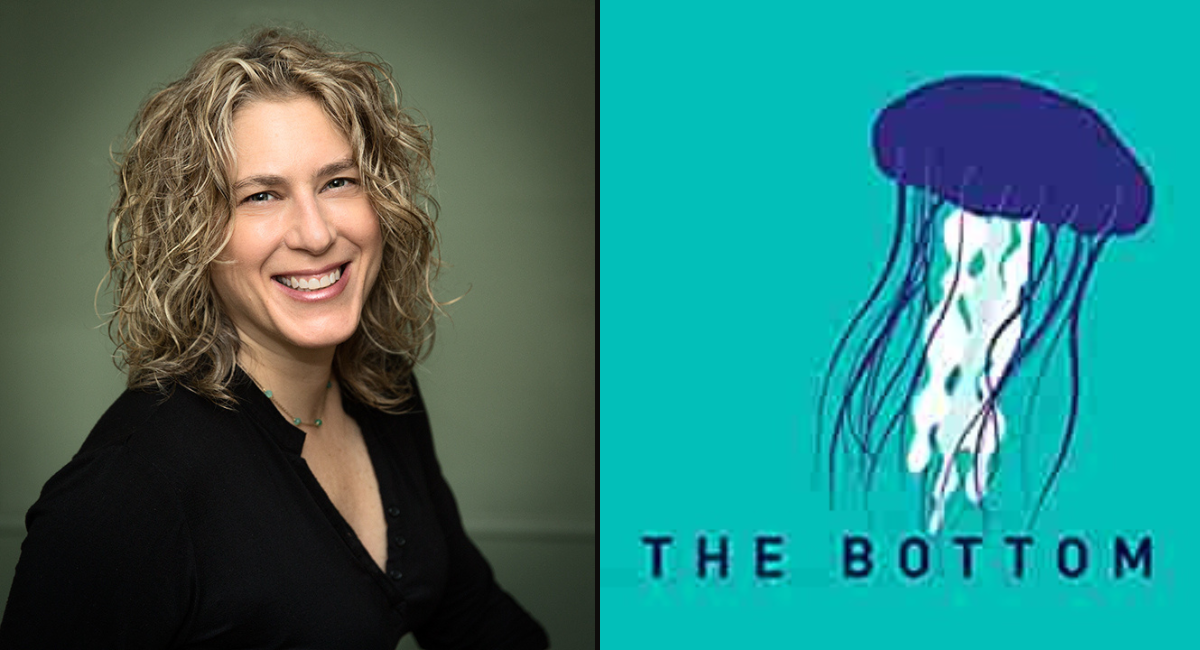“The stars of amusement park shows around the world, have long died before their time.”
–National Geographic
I heard some chatter on X (Twitter) recently, where folks were commiserating about whether the natural world was mad at us, considering some of the unique and sometimes bizarre animal behavior we are seeing and, of course, the extreme weather events that seem to be a daily occurrence. When I Googled, “Is Mother Earth angry with us?”, the search engine returned 49M+ results. That’s a lot of anger. From fires and floods to tornadoes and tsunamis it sure feels like she is trying to tell us something. Now, even the animal kingdom seems to have gotten in on the act. Witness bears jumping into backyard swimming pools, hanging out on busy street corners, sharks appearing—and sometimes attacking—on beaches where they are normally not seen and, most recently, orcas ramming into fishing vessels. According to an article in BBC Science Focus, the way that some media have employed some emotional language to describe the mammals’ behavior is worth exploring. Some reports have suggested that the animals are seeking revenge on boats that are encroaching on their hunting grounds. Furthermore, the article continues, in “creating a narrative where these orcas are angry, vengeful or bent on teaching us humans in our fragile sailing boats a lesson is at best unwise and at worst dangerous. In doing that, we’re telling a story in which humans are on one side of the battle and orcas are on the other.” Lori Marino, Founder and President of the Whale Sanctuary Project and a leading expert on the brains of whales and dolphins explains, “Parts of their brains—like the limbic system that you can think of as the emotional processor—they share with us. So, they probably do experience anger, grief and joy.”
But, she continues, “If we try to say that these social, intelligent, playful animals are solely good and peaceful—or solely bad and aggressive, we’re turning them into caricatures.”
Of course, films like Free Willy and Flipper, and other similar works, portray them as sociable, entertaining animals. While they are that, these impressions actually serve to numb us to the realities of their forced captivity. Being entertained by seeing dolphins in the wild while on a boat, or seeing whales breaching in open waters, is far different—both physically and philosophically—from the entertainment we witness in seaquaria.
***
With an afternoon off from a business meeting, my husband and I visited Orlando’s SeaWorld this past January. Neither of us had been to the park in decades. Never mind that the Port of Entry Lighthouse was looking a little long in the tooth and in need of a paint job. As we made our way past the shallow water exhibits and the Dolphin Theater we took note of new additions to a park that was once dedicated solely to the traditional sea animal experience: 21st-century thrill rides like the Manta rollercoaster, which reaches a speed of 56 m.p.h., while riders are restrained in the prone position. I wasn’t too surprised that the park had found it necessary to add rides to the experience. Today’s families and savvy young people who are used to lightning-fast video games and virtual reality couldn’t possibly be satisfied with the simple pleasures of petting a stingray or ooh-ing and ahh-ing over the impossibly cute dolphins.
***
SeaWorld
SeaWorld in Orlando opened on December 15, 1973, as the third park of the entertainment chain and just two years after Walt Disney World Resort’s Magic Kingdom. My first visit was in 1978. The allure of exotic sea creatures, charming dolphin antics, and the enormity of the killer whale Shamu reinforced the Orlando area’s developing reputation as a desirable multi-park vacation destination. Back then, most everything in Orlando was shiny and new and hadn’t yet become jaded by Disney’s objectification of its beloved characters in pursuit of the almighty dollar. And we, as a country, hadn’t awakened to the cries of animals in captivity—animals who were often ripped from their social communities solely for our entertainment. While zoos and seeking animals in captivity for entertainment was not anything new to civilization (wall carvings found in Egypt and Mesopotamia are evidence that rulers and aristocrats created menageries as early as 2500 BCE), it became increasingly obvious through the work of animal rights advocates that in some cases, keeping these creatures in captivity was not in their best interests, even if the stated goal was to help prevent extinction. As recently as the 1980s we were all still okay with elephants front and center at the Greatest Show on Earth. We were ignorant. Or were we just not interested in what went on behind the scenes?

Lolita the killer whale, now known as Toki, performs in her stadium tank. (File photo/Miami Herald/TNS)
***
In 2016, SeaWorld announced that it would end orca breeding at all its marine parks and phase out its killer whale shows. And because SeaWorld hasn’t collected an orca from the wild in almost four decades, this will be the last generation of orcas in the park’s care. The 2016 announcement said SeaWorld was also phasing out its theatrical orca whale shows. We soon learned this year, though, that that wasn’t entirely true. The “Orca Encounter,” at Shamu Stadium, the 5,500 seat, 7M gallon home to the park’s killer whales that opened in September 1984, is now touted as being primarily an educational experience. I still felt like our show featured trainers (who were no longer allowed in the water with the whales) encouraging the orcas to do a modicum of prescribed activities—call them what you will, I’ll call them tricks—including spinning, porpoising, and diving.
As we became immersed in the antics in the tank below us, I recalled taking my daughters, now in their 30s, to SeaWorld San Antonio in the 1980s where they insisted on seats in the front row of the “Splash Zone” (the best place to be on a hot Texas day). During my recent “Orca Encounter,” I was mesmerized by the giant creatures’ speed and agility until, after about ten minutes, the show was halted abruptly with the trainers announcing that the orcas “were not up to performing at this time.” For the kids in the stadium—and especially in the Splash Zone—it was the equivalent to the DJ scratching a vinyl record to a halt. I’m sure many in the audience did not get the intent behind this nuanced message. It took me a few minutes, but it soon dawned on me that this was part of the SeaWorld corporate line, to ensure that the audience was made aware that the orcas were not being coerced into performing. The trainers continued with some video and educational content about orcas in the wild but, let’s face it, the folks really wanted to see the orcas leap and dive (and, above all, splash the audience).
***
Tilikum
Tilikum was only two years old when he was captured in 1983. Before his death in 2017, Tilikum had the sad-looking collapsed dorsal fin and curled flukes that come, in part, from performing at the water’s surface (victims of gravity), broken teeth from gnawing on his unnatural concrete-and-steel habitat and abraded skin from the aggression that occurs when whales from different pods are held in a confined space. Researchers think that frustration caused by his confinement and lack of autonomy may have contributed to his aggressive behavior that killed three people. On Feb. 24, 2010, during an exclusive guest experience called “Dine with Shamu,” he pulled trainer Dawn Brancheau into the water ultimately killing her. As punishment for her death, he was kept in solitary confinement for a year. In a 2016 New York Magazine article, Naomi Rose, a marine mammal biologist, who has advocated against killer whale captivity for more than 20 years, said, “His life has been extraordinarily difficult … He’s not a normal guy.”
Inbreeding and Aggressive Behavior
Some research suggests that aquaria breeding programs perpetuate the manifestation of aggressive behavior among captive orcas. Former SeaWorld trainer Samantha Berg noted, during the period when SeaWorld’s breeding program was still active, that the goal of legitimate animal breeding programs is not to just make more animals, but to strengthen and diversify the gene pool, thus producing animals that are more resilient, more resistant to disease, and which display the specific kinds of traits that are considered to be desirable (for example, for dairy cattle, this might be to increase milk production; for dogs, it might be temperament, speed or agility, etc.). Since SeaWorld was limited by the small number of captive male orcas in its collection, Berg noted, it’s not like any genetic testing they could do would be meaningful.
“They have the whales they have, and they are forced to use those whales for breeding,” she said.
Berg concluded, “Why would anyone consider breeding an animal that has demonstrated extreme aggression towards humans on numerous occasions? Especially when they know without a doubt that this animal’s progeny will likely continue to interact with humans?”
***
Blackfish
I couldn’t stop thinking about the orcas after I left SeaWorld and began some additional online research. Their stories were at once heartbreaking and enraging. I was determined to learn more about the whales and the terrible history surrounding their capture and imprisonment.
Upon returning home from Florida, I first watched the 2013 documentary, Blackfish, which illustrated, with an unflinching eye, the reality of life for killer whales in captivity. According to experts in the film orcas, who are incredibly social among their own communities, have never been known to be aggressive towards humans in the wild. Most orcas never leave their family pods—or their mothers—during their lifetime. Seventy orcas have been born in captivity around the world since 1977 (not counting another 30 that were stillborn or died in utero), according to records in two databases maintained by cetacean experts.
***
Lori Marino explains, “The chronic stress of trying to adapt to such a barren and artificial environment leads to psychological and behavioral abnormalities that eventually wear down the whales’ immune system, resulting in increased infection rates and early death.”
Marino notes that these magnificent beings can reach speeds upwards of 35 m.p.h. during periods of intense activity, are in tanks that are much too small for them, which in turn reduces them to “repetitive actions without purpose … endless circling, grating the teeth on tank walls and gates.”
Marino notes that “61 percent of captive orcas have dental pathology so that their teeth must be drilled out and then rinsed daily to try to prevent infection.”
In Blackfish, SeaWorld staff are seen repeatedly telling park visitors that because of the excellent care the whales receive, they often live much longer than they would in the wild. In the wild, male orcas can live to an average of 30 years (maximum 50-60 years) and females to an average of 46 years (maximum 80-90 years), yet only a few wild-caught orcas have lived past age 30. Lolita, an orca at the Miami Seaquarium, had entertained guests for more than 50 years before the park bowed to public pressure and planned to release it into the ocean, died in August. The orca, also known as Tokitae, as recently as the week before her death, was said to be in good health as a team, with private funding, was preparing to return her to her native waters (in a safe enclosure) in the Pacific Northwest to live out the remainder of her days. Yet, it was unclear how the orca’s condition deteriorated so quickly. Tokitae, who was about 20 feet long and 7,000 pounds, was living in an 80-foot-long, 35-foot-wide tank.
A PETA (People for the Ethical Treatment of Animals) statement noted that she had been kept in “the smallest, bleakest orca tank in the world, deprived of any semblance of a natural life” and had displayed “repetitive and abnormal behavior,” indicating “severe psychological trauma.”
Naomi Rose, a marine mammal scientist at the Animal Welfare Institute, said “It is a sad irony that Tokitae died now…Humans failed her.”
***
Most orcas in U.S. aquaria were caught and transported from the Pacific Northwest. In 1972, the Marine Mammal Protection Act limited unlawful orca killing and harassment. However, capturing killer whales for aquaria was not outlawed in Washington State until 1976, and it was not until nearly 30 years later that they would be protected under the Endangered Species Act. As recently as 2021, a Science article noted, “the International Union for Conservation of Nature classifies orcas as ‘data deficient.’ Some of their populations might be endangered, but there just isn’t enough information to be sure.”
In one of the most emotionally wrenching scenes in Blackfish, the captain of a boat whose mission was to capture orcas, recalls the sounds—wailing and almost humanlike keening—that came from the pod as the young were removed forcibly from their mothers and loaded onto the ship. The man’s wizened face, a testament to a life on the water, is screwed up as if in pain. As the scene evolves, the realization dawns on him that he’s been an accomplice in the ill-treatment of complex and sensitive animals who are denied everything that is natural and important to them as they are forced into captivity. His torment is palpable as he admits, through tears, that he can’t believe what he’s done.
***
“For so long, people had been telling themselves this story they could live with, of a happy, thriving Shamu,” says filmmaker Gabriela Cowperthwaite, who directed Blackfish. “Nobody wants to go to work [daily] thinking they’re doing something inhumane to animals they love. And the trainers do love them. But at the end of the day, this 50-year experiment did not work. The most important thing we learned was they don’t belong in captivity.”
Activists, including PETA, have long pressured SeaWorld to free its whales and dolphins. As far back as 2011, PETA even filed a lawsuit arguing that orcas were “slaves” under the 13th Amendment of the U.S. Constitution.
Do I feel guilty for my active participation in viewing the orcas, and even the dolphins, soaring and plunging for my entertainment? Admittedly, after all my research and viewing Blackfish, I’m disappointed in myself for not thinking harder about how these splendid creatures were captured and treated over decades of forced bondage.
As society learns more witnessing the modern evolution of our culture’s mores, we can own our mistakes and with that knowledge hope that we—and future generations—don’t repeat them.
Anthropomorphism and Animals in Entertainment
Anthropomorphism is the act of giving human characteristics to a non-human entity. Innocent examples include reading a book about Peter Rabbit or talking to a pet. Anthropomorphism becomes an issue when we start using it to force human emotions and principles on real-life animals.
SeaWorld CEO Joel Manby said, back in 2016 announcing the termination of the captivity and breeding program, “We are proud of contributing to the evolving understanding of one of the world’s largest marine mammals” also touting how SeaWorld changed attitudes toward orcas from “hated, hunted” to “among the most popular marine mammals on the planet.” There is no mention of the lucrative draw for SeaWorld to have these “killers”—who resembled giant cuddly toys (ready-made prototypes for the gift shop)—performing cute tricks while looking like they were smiling.

In an article for The Guardian, Patricia Ganea, a psychologist at Toronto University, ran a series of experiments on children who were given information about animals in straight factual form and then in a more fantastical anthropomorphized way. Her results, she noted, revealed that “anthropomorphism can lead to an inaccurate understanding of biological processes in the natural world,” she said. “It can also lead to inappropriate behaviors towards wild animals, such as trying to adopt a wild animal as a ‘pet’ or misinterpreting the actions of a wild animal (italics my own).”
The view of using animals for entertainment purposes has certainly evolved over the last several decades. Unfortunately, many creatures, such as captive orcas and other animals taken for use in aquaria and animal parks around the world, have suffered at the hands of greedy entertainment conglomerates hungry for ticket sales. These entities sell their shows to people looking for what appear to be happy-go-lucky and playful groups of dolphins, whales, and others. The hope is that the knowledge of the reality of the animals in captivity will spur more change and reverse human opinion, enabling people to see the animals in both a new light—and out of their cruel and unnatural living situations.







0 Comments